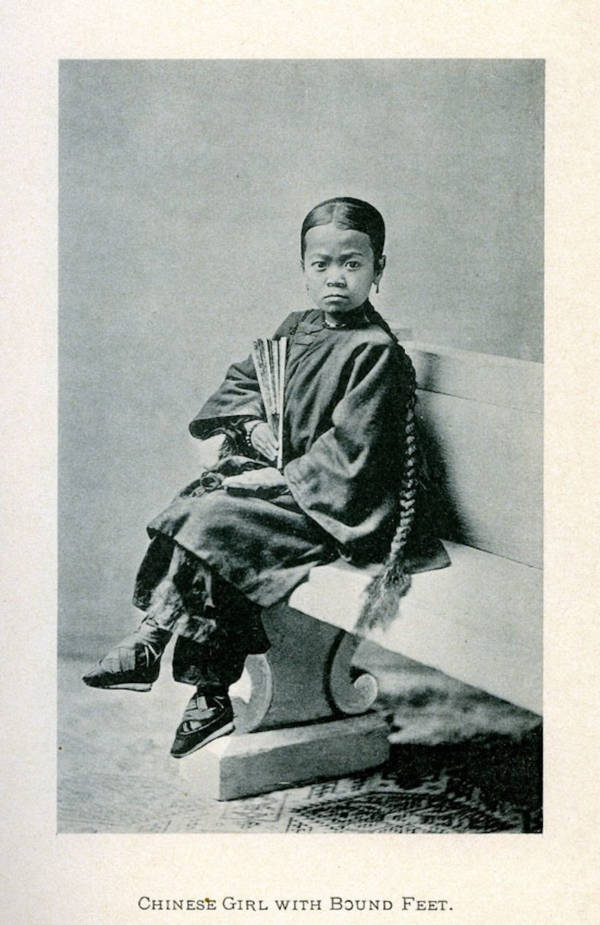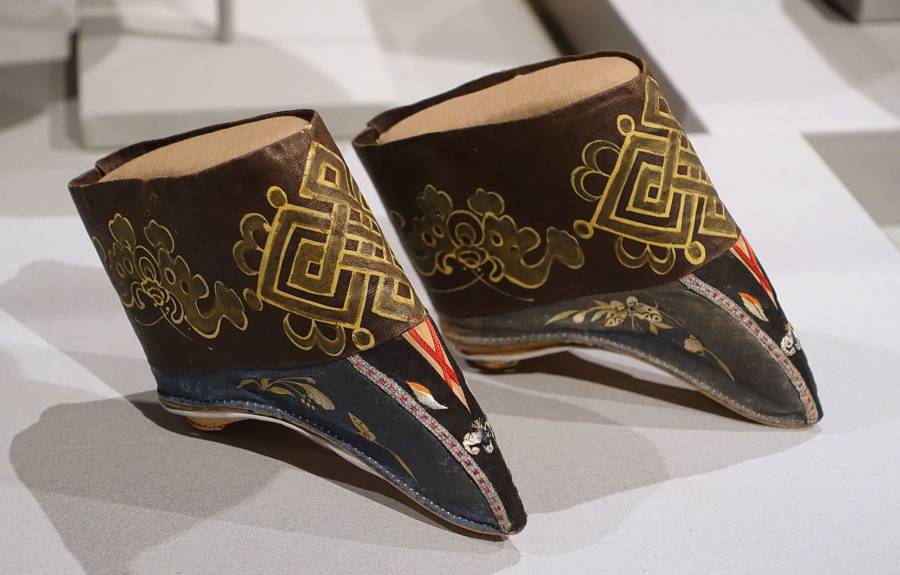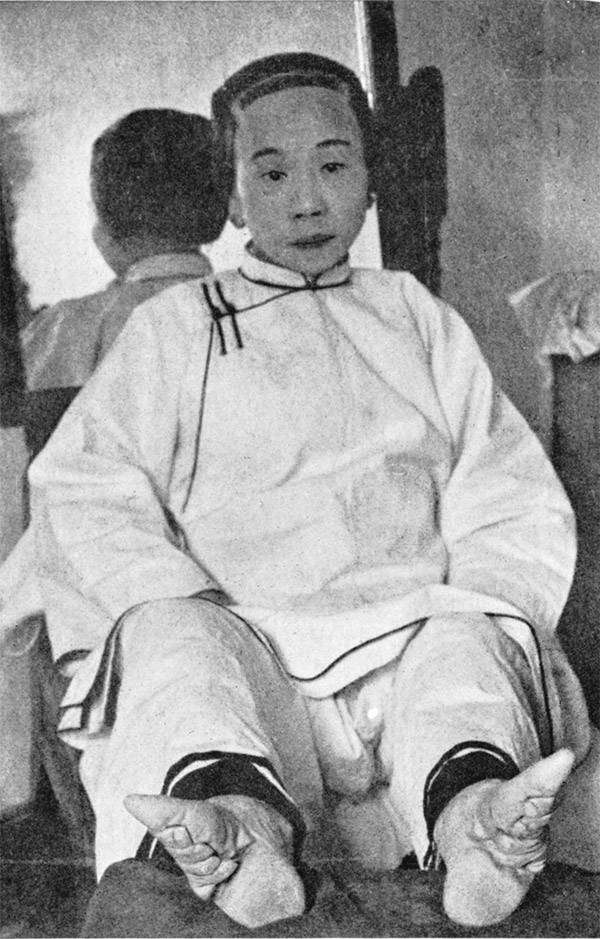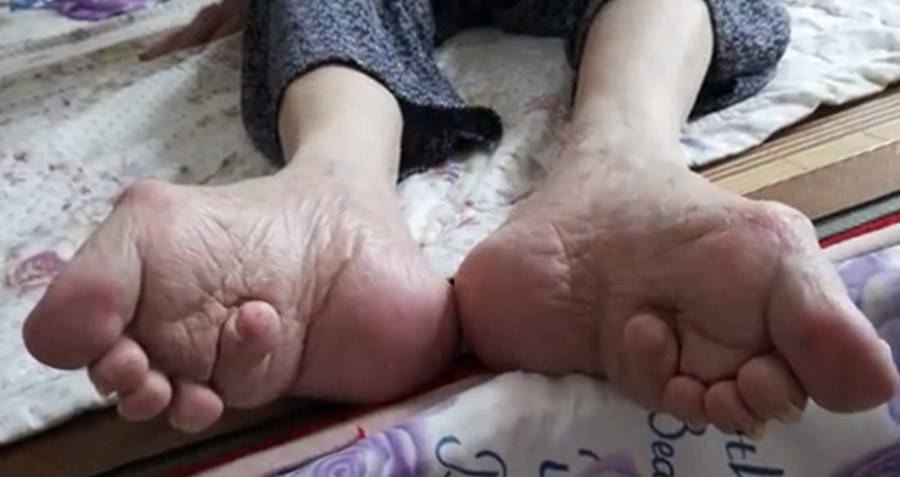1070. China - # 3 - Yichang, and feet binding!
The evening after we saw the Terracotta Warriors, we went to a lovely dinner and show at the Tang Dynasty Song & Dance show, with a dumpling banquet.
Some scenes from the dance and show numbers are here:
Each number was different, and very colorful. This number the lady was swirling long scarves, beautifully to the music.
Most people live in high rise buildings. There isn't room in the city for land for private homes for most people. The younger people like the high rise apartments because they have modern conveniences, appliances, toilets, etc. Typical shops on the road sides.

They did have some homes which were not high rise apartment buildings. They were owned by very wealthy people. The bulk of them lived in high rises.
In another museum we saw a lot of relics. The above is a porcelain pillow! The women who used one like this had an elaborate hair style, and this pillow was supposed to support her head, while not messing up her hair-do!
This above is the typical marriage coach. In it was the bride, with 4 men carrying it to the wedding. In earlier times there were mostly arranged marriages, and the groom didn't see his bride until she emerged from this coach!
These are many tools used in normal farming and household uses.
Above was a type of skirt, and below are examples of very small shoes which were worn by women who had their feet bound.
From Wikipedia:
The picture above included the small shoes women wore, after foot binding!




Some scenes from the dance and show numbers are here:
Each number was different, and very colorful. This number the lady was swirling long scarves, beautifully to the music.
The last number had this beautiful backdrop with the lotus flower.
The lotus flower has a lot of significance to the Chinese.Everywhere we drank bottled water. We received 2 bottles each day in our hotel, and also on the bus, and in restaurants. Even brushed our teeth in it! We then flew to the city Yichang. It was a "small city" with only 4 million people! The streets were very clean, and people obeyed the traffic lights much better! Below are a few scenes from Yichang, before we got on the Yangtze River Cruise. Interesting modes of travel, with the umbrella as a part of it. In that part of China they said it rained 300 days out of every year.
Most people live in high rise buildings. There isn't room in the city for land for private homes for most people. The younger people like the high rise apartments because they have modern conveniences, appliances, toilets, etc. Typical shops on the road sides.

They did have some homes which were not high rise apartment buildings. They were owned by very wealthy people. The bulk of them lived in high rises.
As you can see, they had a Walmart! We went in it awhile, and they had many of the typical products, with the English labels on it, and the Chinese beneath!
In another museum we saw a lot of relics. The above is a porcelain pillow! The women who used one like this had an elaborate hair style, and this pillow was supposed to support her head, while not messing up her hair-do!
This above is the typical marriage coach. In it was the bride, with 4 men carrying it to the wedding. In earlier times there were mostly arranged marriages, and the groom didn't see his bride until she emerged from this coach!
These are many tools used in normal farming and household uses.
The things hanging were sort of coats, heavy fur, which kept them warm in their cold winters, doing outside chores. Examples of clothing worn in times past.
Above was a type of skirt, and below are examples of very small shoes which were worn by women who had their feet bound.
From Wikipedia:
Foot binding
| Foot binding | |||

A Chinese woman showing her foot, image by Lai Afong, c. 1870s
| |||
| Traditional Chinese | 纏足 | ||
|---|---|---|---|
| Simplified Chinese | 缠足 | ||
| |||
| Alternative (Min) Chinese name | |||
| Traditional Chinese | 縛跤 | ||
| Simplified Chinese | 缚跤 | ||
| |||
Foot binding was the custom of applying tight binding to the feet of young girls to modify the shape and size of their feet. It was practiced in China from the Song dynasty until the early 20th century, and bound feet were considered a status symbol as well as a mark of beauty. Foot binding limited the mobility of women, and resulted in lifelong disabilities for most of its subjects, although some women with bound feet working outdoors have also been reported. Feet altered by binding were called lotus feet.
The practice possibly originated among upper class court dancers during the Five Dynasties and Ten Kingdoms period in 10th century China, then became popular among the elite during the Song dynasty, eventually spreading to all social classes by the Qing dynasty. Foot binding was practiced in different forms, and the more severe form of binding may have been developed in the 16th century. It has been estimated that by the 19th century, 40–50% of all Chinese women may have had bound feet, and up to almost 100% among upper class Chinese women.[1] The prevalence and practice of foot binding however varied in different parts of the country.
There had been attempts to end the practice during the Qing dynasty; Manchu Kangxi Emperor tried to ban foot binding in 1664 but failed.[2] In the later part of the 19th century, Chinese reformers challenged the practice but it was not until the early 20th century that foot binding began to die out as a result of anti-foot-binding campaigns. Only a few elderly Chinese women still survive today with bound feet.[1]
There are a number of stories about the origin of foot binding before its establishment during the Song dynasty. One of these involves the story of a favorite consort of the Southern Qi emperor Xiao Baojuan, Pan Yunu (died 501 AD), who had delicate feet and danced barefoot on a floor decorated with golden lotus flower design. The emperor expressed admiration and said that "lotus springs from her every step!" (步步生蓮), a reference to the Buddhist legend of Padmavati under whose feet lotus springs forth. This story may have given rise to the terms "golden lotus" or "lotus feet" used to describe bound feet; there is, however, no evidence that Consort Pan ever bound her feet.
The general view is that the practice is likely to have originated from the time of the 10th-century Emperor Li Yuof the Southern Tang, just before the Song dynasty. Li Yu created a six-foot tall golden lotus decorated with precious stones and pearls, and asked his concubine Yao Niangto bind her feet in white silk into the shape of the crescent moon, and perform a ballet-like dance on the points of her feet on the lotus. Yao Niang's dance was said to be so graceful that others sought to imitate her.The binding of feet was then replicated by other upper-class women and the practice spread.
Some of the earliest possible references to foot binding appear around 1100, when a couple of poems seemed to allude to the practice. Soon after 1148, in the earliest extant discourse on the practice of foot binding, scholar Zhang Bangji wrote that a bound foot should be arch-shape and small. He observed that "women's footbinding began in recent times; it was not mentioned in any books from previous eras." In the 13th century, scholar Che Ruoshui wrote the first known criticism of the practice: "Little girls not yet four or five years old, who have done nothing wrong, nevertheless are made to suffer unlimited pain to bind [their feet] small. I do not know what use this is.
The earliest archaeological evidence for foot binding dates to the tombs of Huang Sheng, who died in 1243 at the age of 17, and Madame Zhou, who died in 1274. Each had her feet bound with 6-foot-long gauze strips. Zhou's skeleton was well preserved and showed that her feet fit the narrow, pointed slippers that were buried with her. The style of bound feet found in Song dynasty tombs, where the big toe was bent upwards, appears to be different from the norm of later eras, and the excessive smallness of the feet, the "three-inch golden lotus", may be a later development in the 16th century.
More information in case you are interested --
As the story goes, a Chinese Emperor was quite taken with the beautiful, tiny feet of one of his court dancers. Upper-class women, hoping to attract the attention of an emperor themselves, starting binding their own feet to make them smaller. From there, the practice spread to the rest of the country.

Wikimedia CommonsYoung Chinese girl with bound feet.
Unfortunately for women, the process was extremely painful. It usually started when a girl was young, typically between four and nine years old.
First, the feet were soaked in a mixture of animal blood to soften them. Then, the toenails were cut back to prevent infections. After that, the toes were twisted downward towards the bottom of the foot, shattering the bones.
The broken toes were then tightly bound with cotton strips, preventing them from healing properly. Over the next few months or years, the process would be repeated every few weeks with the aim of making the feet as small as possible.

Wikimedia CommonsShoes meant for women with bound feet.
If a family could afford it, they would hire a professional foot binder. The idea was that a professional foot binder would be less likely to be moved by the girl’s agony than a family member, which would let them bind the feet tighter.
The process was also extremely dangerous for the girl’s health. The toenails frequently grew back into the swollen flesh of the feet, which lead to horrible infections. In addition, the lack of circulation in the feet often caused gangrene, but this was actually seen as a benefit. The gangrene would cause the toes to rot and eventually fall off the feet, making them even smaller.
Sometimes, the binders put shards of broken glass up against the cloth in order to deliberately introduce infections and cause the toes to fall off. If these infections spread to the bloodstream, as they often did, then the girl was at risk of dying from septic shock. Around 10% of girls subjected to foot binding died as a result of sepsis.

Wikimedia CommonsWoman with bound feet.
The ideal for how the foot was supposed to look was the “Golden Lotus Foot,” measuring about 4 inches. Women with feet this small were considered extremely desirable to men. The small, swaying steps that women with bound feet had to take were considered very seductive. Even the broken, twisted feet themselves were seen as sexy.

YouTubeAn elderly woman who went through Chinese foot binding displays what is left of her feet.
Of course, the reason people put their daughters through this horrible process wasn’t just because they thought it made them more attractive sexually. Women with the ideal foot size were very desirable for marriage. Because having bound feet was a sign of sophistication and being upper-class, women without bound feet had little chance of marrying into nobility.
So, foot binding was a way for families to increase the odds of their daughters marrying well. But other historians have also argued that foot binding meant that the women would be entirely dependant on their fathers and husbands, and thus that it was a way of controlling women.
So there you have information from the internet about feet binding!
Another interesting building I saw as we were riding in the bus! We then rode around an hour and a half to get to the place we would board the cruise ship to cruise on the Yangtze River. We went through some beautiful canyons!
It was dark when we arrived at the ship, and had a lovely girl below to welcome us, and take us to the ship. Tomorrow I will write about the 4 day cruise.









































Comments